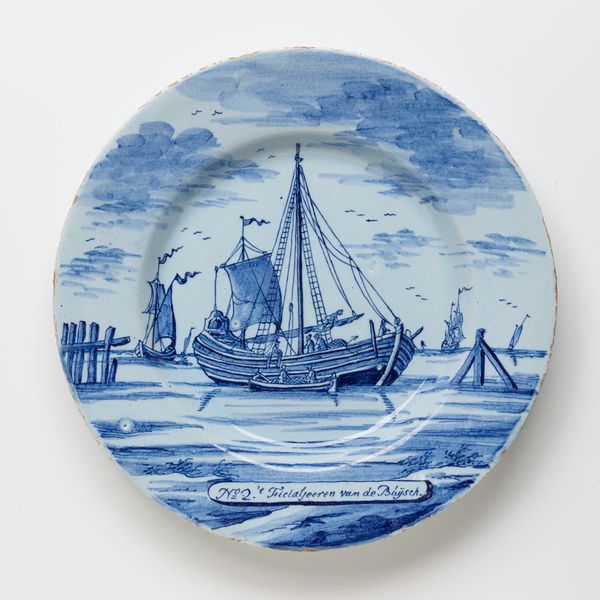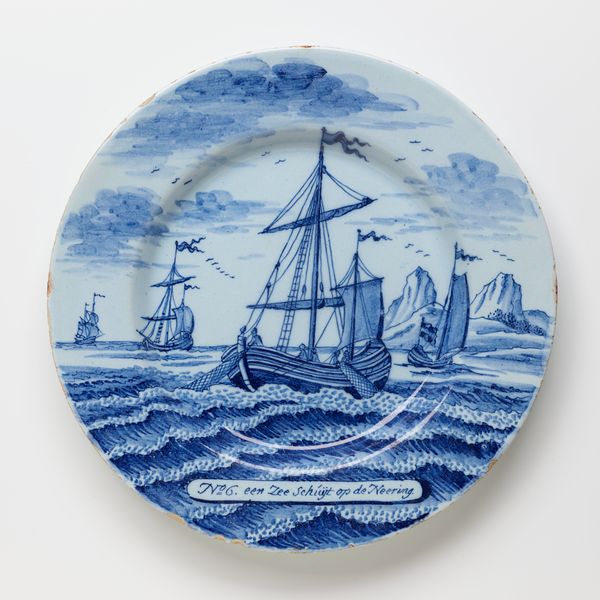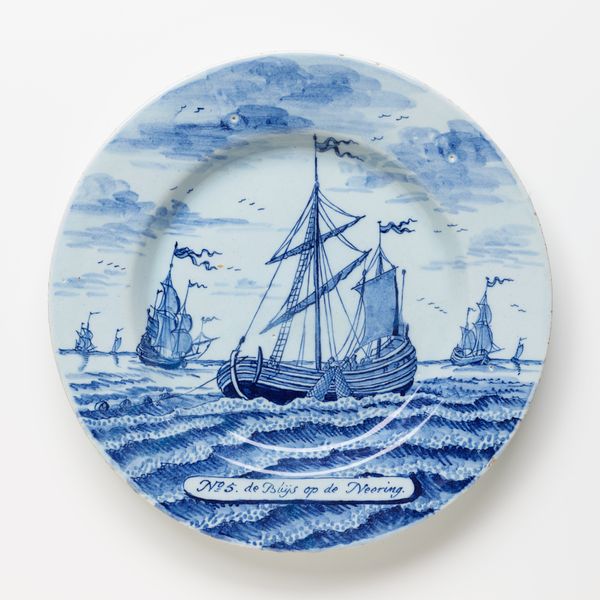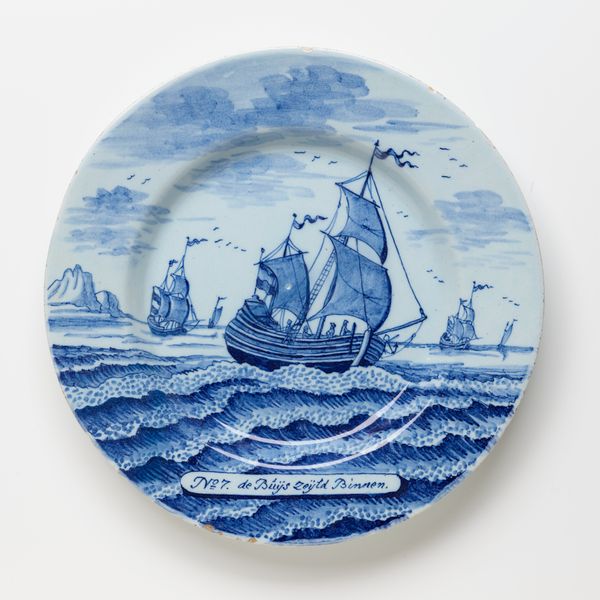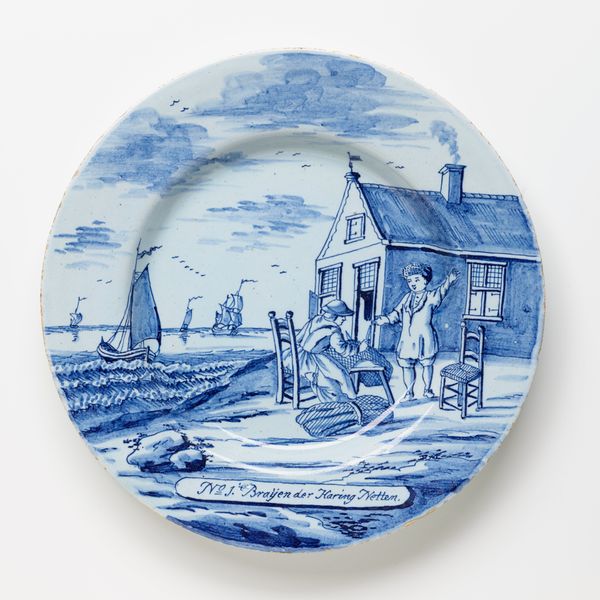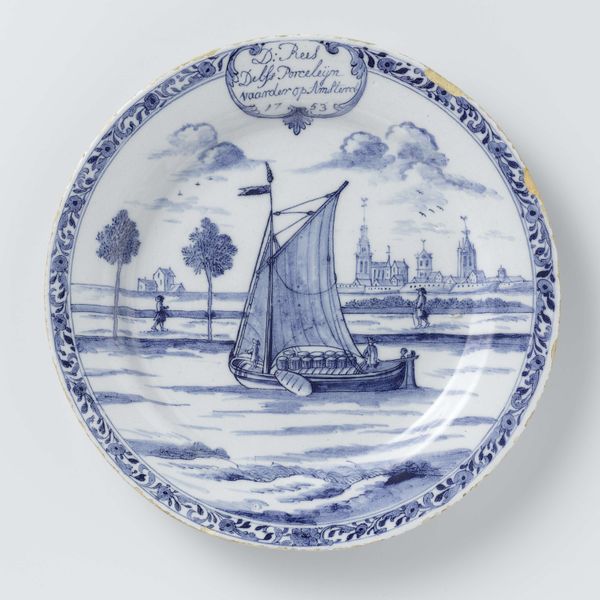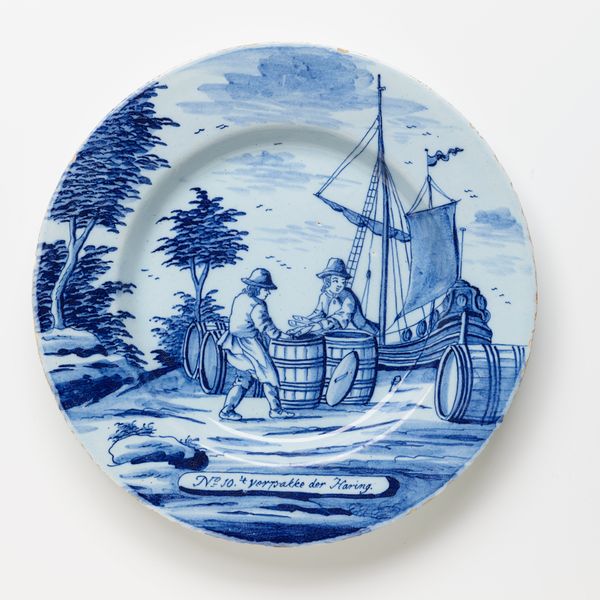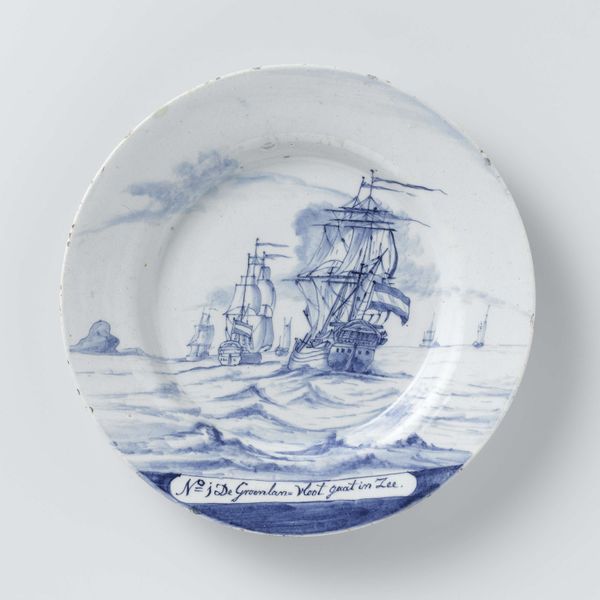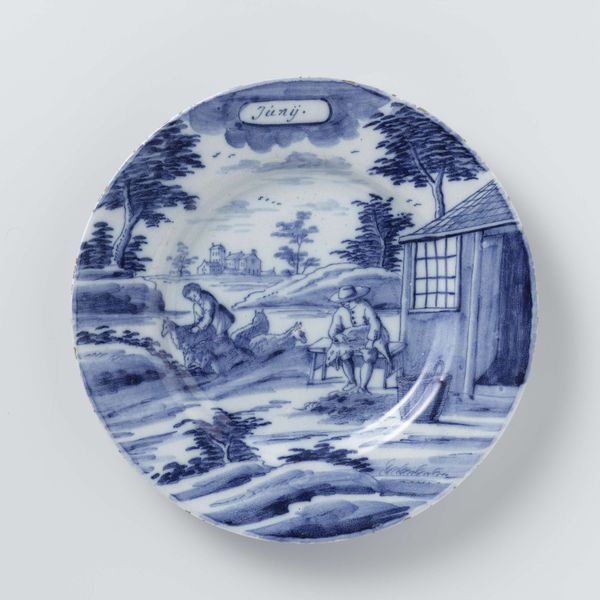
print, ceramic, earthenware
#
dutch-golden-age
#
blue and white
# print
#
landscape
#
ceramic
#
earthenware
#
orientalism
#
monochrome
Dimensions: 1 × 9 × 9 in. (2.54 × 22.86 × 22.86 cm)
Copyright: Public Domain
Curator: Let’s turn our attention to this intriguing piece of earthenware, "No. 3" from around 1780, originating from the Porceleyne Bijl factory. You’ll find it here at the Minneapolis Institute of Art. Editor: My immediate reaction is tranquility. The blue monochrome evokes a sense of calm, a breezy seascape captured in delicate detail. There is an unsettling relationship, though, between its artistic intentions and its object-ness: A plate. Curator: Absolutely. Delftware, as this earthenware is often called, gained immense popularity in the 18th century. Its rise is intertwined with the Dutch East India Company and their trade with Asia. Think about how these Dutch landscapes appropriated elements we now recognize as Orientalism. Editor: The composition also carries its own history. Notice the central placement of the sailing vessels, juxtaposed against the backdrop of land structures and suggested waterways. It’s not simply decorative. The placement reinforces trade and the infrastructure needed to keep the marketplace humming. There’s no labor to be seen on the piece. Curator: Indeed. These pieces weren’t just for aesthetic pleasure. The imagery also acted as a powerful form of cultural messaging, often promoting a specific national identity deeply engaged with economic exchange. It suggests the complex colonial network upon which so much European prosperity rested. These landscapes often hid a far more brutal global project. Editor: I agree. Recognizing the social context is critical. It highlights the intertwined narratives of economic power, artistic expression, and cultural representation that were often marketed to consumers for use. Looking closely reveals the role this plate and many others played within its social-political framework. Curator: A very powerful reading. By looking beyond just the beauty, we can start to deconstruct its complex visual and historical meaning, including colonialism. Editor: Understanding its purpose invites dialogue. This isn't merely a scene of leisure or travel; it speaks volumes about the networks that sustained the world as Europeans understood it. Curator: Exactly! Now that you mention that relationship, I'm starting to rethink my appreciation for the technique. Editor: This has offered new layers to consider about beauty, visual arts, and global politics!
Comments
minneapolisinstituteofart about 2 years ago
⋮
This series of twelve plates is painted with scenes related to fishing for herring. While undistinguished in appearance, this silver fish was an abundant source of food in the North Sea and supported a vast fishing industry in the Netherlands. Herring fishing accounted for such a large percentage of the wealth of the Dutch Republic that Amsterdam was said to have been built on herring bones.
Join the conversation
Join millions of artists and users on Artera today and experience the ultimate creative platform.
